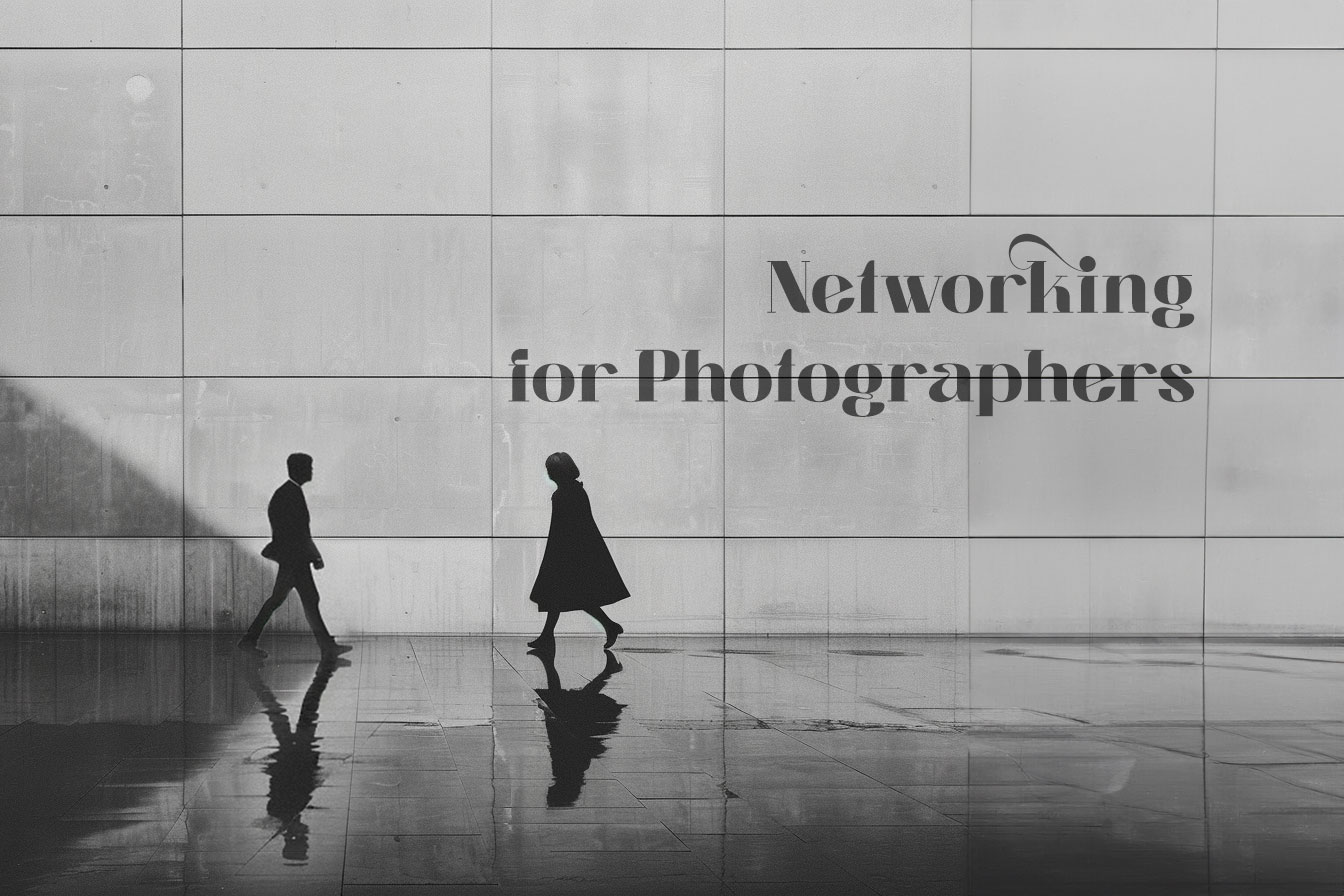
How to Kickstart Your Photography: Real Strategies to Get Clients to Photograph
Breaking into the photography industry can be a daunting task. In fact, it is very difficult. The hunt for that elusive first client feels like an insurmountable hurdle if you’re running your own business, especially if you’re a newcomer trying to make your mark. But no worries, because I’ve been in your shoes and know exactly what it takes to overcome this challenge. I’ve repeated the same patterns every time changing industries and it has worked every time.
How do I get clients to photograph?
To get clients to photograph, first identify your niche, whether it’s fashion, boudoir, fitness, family, or something else. Start reaching out, even without a portfolio, and invest in models or use friends to enhance your work. Utilize your network, including family and colleagues, leverage platforms like ,Thumbtack and ,Snappr, and employ social media marketing tailored to your specific area. Your resources may vary, but exploring connections and making the most of what’s available in your network can set the path for your photography career.
Finding clients is a common stumbling block for many aspiring photographers. It feels like a ,catch-22 where you need clients to build a portfolio, but without a portfolio, it’s hard to attract clients.
I remember the days of relentless outreach, facing rejection after rejection. It was disheartening, but persistence led me to my first client, and there was no looking back from there. My story is proof that success is attainable, even when starting from scratch or when everyone keeps saying photography is dead. It’s not. Not even with the AI forecast
This blog isn’t about abstract theories or untested ideas. It’s a practical roadmap, drawn from 10 years of hands-on experience in the industry. It’s about offering you actionable advice on finding clients and guiding you through the strategies that have worked for me. I also want to share the bad that came with it. Let’s kickstart your photography career together!
Table of Contents
Getting Started: Real Strategies to Get Clients to Photograph

Launching a photography career doesn’t have to wait for a flashy portfolio. Your passion and initiative can make up for what you lack in professional examples. Let’s get familiar with the initial stages of breaking into the industry and How do I get clients to photograph?
It’s a common misconception that you need an extensive portfolio to even think about approaching clients. I know that first-hand because I began photography before it became my career.
Reaching Out:
Initially, your passion and vision will be your selling points. Reach out to friends, family, and local businesses. Offer your services at a discount or even for free to gain experience. It’s all about getting your foot in the door. I personally believe that it’s better to provide free service than it is to provide low prices. Why? Because:
- Valuing Your Time: My time is valuable, and I expect to get paid a fair wage.
- Not Undercutting the Market: I will not undercut the market just to get work. You’re doing yourself a disservice by charging a small fee. It shows them what you think you’re worth, so I’d rather do it for free, but this is up to you!
- Understanding Discounts: A discount is not the same as a low fee. It’s strategic and differentiates you without devaluing your service.
Facing Rejection:
Rejection is part of the game. I faced it multiple times, but the key is not to let it define you. Each “no” takes you closer to a “yes.”
Building a Basic Portfolio:
You don’t need high-end gigs to create a portfolio. Capture what you love, be it landscapes, fashion, or everyday life. Showcase your style and creativity. Your initial portfolio is your calling card, so make it uniquely yours.
Investing in models doesn’t necessarily mean spending money on professional talent. Instead, it’s about finding the right people who align with your vision and are willing to work with you, often for free, to build both your portfolios.
Finding Models:
It might seem counterintuitive to spend money when you’re just starting, but think of it as an investment in your brand. Your ideal models might be just a message away on Instagram or other social media platforms. Start small, reach out, and don’t be discouraged by rejection. Many aspiring models are willing to offer free services, especially for Trade-for-Print (TFP) shoots.
Understanding TFP Shoots:
A TFP shoot is a photo shoot that is not compensated monetarily, but instead, as a trade of services. It’s mutually beneficial to you and your model. Everyone donates their time – models, stylists, photographers – and all parties can use the resulting images for their own purposes or self-gain. It’s a rewarding experience that can give you insights into different creative roles, like a Creative Director, which is a position I mostly occupy now working for….(it’s a secret!)
Conducting Practice Shoots:
These informal sessions allow you to hone your skills and experiment. Collaboration is key, and a casual, respectful approach can make this a win-win for everyone involved.
Be Clear and Professional:
Start with a friendly introduction and clearly explain that you’re proposing a TFP shoot. Outline what’s in it for them, like high-quality images for their portfolio.
Share Your Vision:
Briefly describe the concept and style you’re aiming for. Providing a glimpse of your portfolio or mood board can also help convey your ideas.
Set Expectations:
Outline what you’ll provide, such as edited images, and any requirements like wardrobe or makeup. Clearly communicate the timeline and any other logistical details.
Be Gracious:
Whether they say yes or no, thank them for considering your proposal. If they agree, make sure to follow through on your promises, building trust and a positive reputation.
Investing in models, even without spending money, is about building relationships and creating value for everyone involved. It’s a step towards not just being a photographer but a creator with a vision. Whether shooting for fun or aiming for a role like a Creative Director, these insights and approaches are foundational to growing in the industry.

Is photography a talent or a technical skill? Discover the delicate balance between the two in this insightful exploration of the art of photography.
Beginning with Inspiration: From Family Portraits to Artistic Exploration
My initial inspiration in photography came from ,Elena Shumilova, whose artistic use of natural outdoor lighting guided my early work in family photography. I embraced natural lighting, both outdoors and indoors, with the latter influenced by ,Sean Archer’s incredible indoor natural light portraiture.
Evolving and Embracing Your Style
Inspired by friends and the extraordinary work of Brett Seeley with flash, I began to explore flash photography. Yet, I didn’t want to abandon the natural lighting style that had shaped my earlier work. My curiosity led me to merge these techniques, creating a fusion that embodied my passion for turning photographs into paintings.
Your Niche and the Power of Adaptation
Your niche is your starting point, but it doesn’t have to be your end. My path was one of constant exploration and evolution, from natural light to flash, from photography to artistic creation, and now to the new age of AI-enhanced imagery.
Networking, Building Connections, and Adapting to Market Shifts
Networking and building connections, adapting to market shifts, and remaining open to innovation have all been vital in my success. Stay alert, embrace change, and never hesitate to grow. There is no full stop in being creative, and my story proves that there’s always room to innovate and thrive.
I share this story to encourage you to find your voice, your passion, and your unique path. Whether it’s natural lighting, flash, AI, or a blend of them all, let your creativity guide you. There’s a market for all that’s willing to put in the grind. Stay engaged with the ever-changing landscape, and your unique voice and vision will shape a fulfilling career in photography.

Photographs may capture a moment, but connections between photographers fuel growth. The sharing of ideas, techniques, and opportunities is more than collaboration—it’s the essence of advancing in the field. n Why is networking important in photography? n Networking in photography is of paramount importance as it facilitates collaboration, opens doors to new opportunities, sharpens skills,…
Leveraging modern platforms is an essential strategy for aspiring photographers. It opens doors to a broader audience, enabling you to showcase your work and connect with potential clients. But it’s no longer as simple as “wait and see.” The game has changed, and you must be proactive to succeed.
Gig Economy Services
Utilizing gig economy platforms might get you started, but it should not be the end of the road. While some can make a living doing it, the reality is these platforms often undercut your value and time. You’ll likely end up working for less than minimum wage, fueling the notion that “photography is dead.” But don’t despair; there are more opportunities for your art to make money. The creator economy is predicted to more than double in revenue in the next five years, meaning there’s no time like the present to dive in.
Platforms for Getting Experience (Use with Caution):
These sites might seem like an easy way to get in and gain some experience, but based on my own exploration and experiences, they may not be the best option for photographers. The pricing for a photographer is simply not fair, and some of these platforms even ask for a credit card number without letting you see the work of the photographer who might be showing up. It’s a definite “NO” from my perspective. People might want high quality at low rates, but these platforms seem to work against photographers’ interests and could ultimately harm the industry we love. Ultimately, it could be an entry point for you to learn your way around working with clients. Don’t let it skew your perspective on photography.
Preferred Platforms:
This platform lets clients find professionals for various services, including photography. You can set your own prices, making it a more balanced option.
Similar to Thumbtack, Bark allows photographers to bid for jobs posted by clients looking for photography services.
A broad freelance marketplace where photographers can bid on relevant jobs, even though it’s not specific to photographers.
A general freelancing site where photographers can offer their services in various niches, from product photography to portraits.
Another platform where photographers can bid on various photography jobs, from small projects to more extensive engagements.
It’s a no-brainer to use social media, but the landscape has shifted dramatically in the past 5-10 years. Gone are the days when people would just come to you. Now, with too many people vying for attention, getting noticed on congested platforms is a daunting task. However, new platforms are emerging all the time, offering fresh opportunities to get discovered. Blogging is great and should be pursued, but for immediate attention on modern platforms, you might have to suck it up and actively reach out to people. One exciting prospect is Hyprr, a platform I’m a part of and believe in for the next generation of creators. Being an early bird on platforms like this can set you ahead of the curve. Don’t be one of those who lament missing opportunities. Your chance to grow is always now, not next year.

I wouldn’t advise relying on new or untested platforms to find new clients, especially when established options are available. Currently, the best platform to discover your first client is none other than Instagram. While every social media platform has its strengths and weaknesses, Instagram stands out as the premier choice for client acquisition. Despite its challenges with visibility nowadays, it remains an effective tool for connecting with potential clients. Based on my personal experience, it’s the go-to platform for securing new business. Facebook can also be a valuable resource in this regard. For other objectives like driving traffic to your blog or maximizing monetization, I might not recommend Instagram, but when it comes to landing new clients, it has proven to be highly effective for me. I hope one day this can change as I myself am tired of Instagram’s banning.
The modern photography business is about adapting to market shifts, utilizing the tools available, and most importantly, seizing the moment. Whether it’s gig economy services or social media marketing, it’s about making the most of what’s out there, even when it feels challenging. The rewards are there for those willing to take the initiative. Keep alert, keep learning, and never settle for the status quo. The opportunities are endless; it’s up to you to grab them.

Think about this for a moment: it is estimated that by 2025, the creator economy will be worth $104.2 billion, skyrocketing from its $9.7 billion value in 2018. But how exactly will this unprecedented growth unfold?
To me, photography was never about money. I believed going in, that photography was already dead. It was a passion, a craving to create art, and an interest to connect with people. I didn’t start with dreams of riches; I began with an aspiration to express, explore, and enjoy. If you’re looking to become rich in this business, good luck. It’s possible, but you’re going to need to do a lot to get there and it really does pay off.
The starting point was humble, filled with fun and curiosity. I dabbled in different niches, from wedding photography to fashion and fitness. But it wasn’t about chasing a quick buck; it was about discovery and growth. This mindset allowed me to experiment, to make mistakes, to learn, and most importantly, to build a diverse portfolio to MAYBE make money one day.
Generic vs. Unique Approaches
Starting a career in photography is not an easy feat, and one of the early challenges you’ll face is how to approach your work: Do you go with what’s familiar, or do you pave your own path?
A generic approach might open doors quickly. It can get you in the door to work for companies. Adopting the styles and techniques that are currently in demand could make you employable and help you build a client base. It’s safe, but it may limit your creative flexibility and brand recognition in the long run.
On the other hand, a unique approach can be a riskier path. It could either leave you struggling to find your footing, or it could blow you up into fame and bring riches. It’s a gamble but one that could define you as an artist. I started with a passion for artistic outdoor shots and flash photography and found myself loving the world of fitness and fashion photography. The road was uncertain, but it was my road.
Building Connections and Focusing Your Passion
As my portfolio grew, opportunities began to emerge. Working for companies opened doors and introduced me to individuals across various industries. Networking was not merely a strategy; it was a natural progression, a series of relationships built on respect and shared interests.
Eventually, the abundance of work forced a decision. I needed to focus, to select a specific industry and a particular style. And although this may seem like a limitation, it was liberation. Focusing allowed me to delve deeper, to create what I truly wanted, and to refine my art.
Building Your Brand and Business
Building a successful photography business isn’t just about your style; it’s also about your strategies for reaching out to clients.
Leverage Social Media:
Platforms like Instagram and Facebook are still the best tools to find your first clients. Though visibility can be a challenge, understanding how to navigate these platforms can be your gateway to success.
Networking and Personal Connections:
My career took off because I worked for companies that led me to meet other people across various industries. Treating everyone with respect and dignity could lead to that one right person taking you far in life.
Choosing the Right Gig Economy Platforms:
Sites like Snappr.com, Trend.io, and Ooshot may offer experience but can undercut your value. It’s vital to select platforms that align with your goals, like Thumbtack or Upwork, where you can set your own prices.
Building a Portfolio and Brand: g unique that clients seek.
Start small, just have fun, and create art. Gradually, you’ll build a portfolio that reflects who you are and what you can do. Your passion and creativity can turn into a brand, somethin
Remember, your opportunity to grow is always now. Whether you take a generic approach to gain experience or a unique one to define your brand, the key is to keep learning, adapting, and above all, loving what you do.
Conclusion:
Kickstarting a photography career isn’t about following a rigid or generic pathway. It’s about finding what resonates with you, experimenting with various niches, building connections, and exploring platforms both old and new. Your path is uniquely your own, and it’s defined by your passions, skills, and the relationships you foster along the way.
Starting out, you might not know exactly what you’re doing, and that’s perfectly normal. You might experiment with different styles, be inspired by various photographers, or even stumble into a niche by accident. Each step will lead you to a deeper understanding of your craft and help you refine your vision.
Not every strategy will lead to immediate financial success. The wealth in photography lies in the creative satisfaction, the connections made, and the gradual growth of your brand and business. Learning from your experiences, leveraging modern platforms, and consistently adapting to market shifts will be key to your ongoing success. I know this sounds very cheesy, but the reality is, its not an easy business to break into, so you have to really enjoy the process of even getting there. Never forget the value of persistence and the importance of networking. It might be a person you meet today who opens a door for you tomorrow. Treat everyone with respect and dignity because anyone could take you very far in your career.
It’s not about waiting for the perfect moment to begin. It’s about seizing today, taking control of your future, and letting your love for photography guide you. Your success story is out there, ready to be written, and it starts with taking that first, fearless step.

Photographs may capture a moment, but connections between photographers fuel growth. The sharing of ideas, techniques, and opportunities is more than collaboration—it’s the essence of advancing in the field. Why is networking important in photography? Networking in photography is of paramount importance as it facilitates collaboration, opens doors to new opportunities, sharpens skills, and creates…
Why aren’t you part of my network?
Join the DangerVerse Community and Let’s Share Ideas!





Leave a Reply